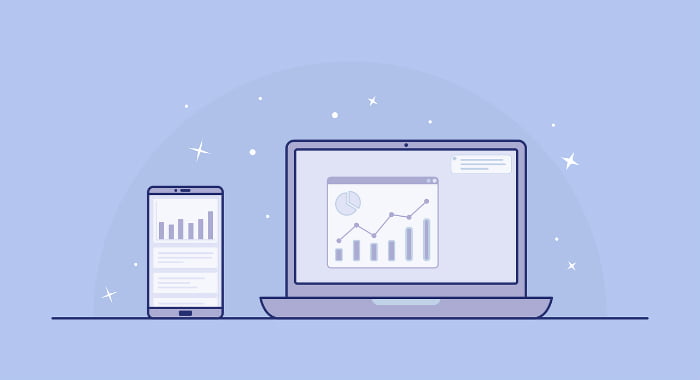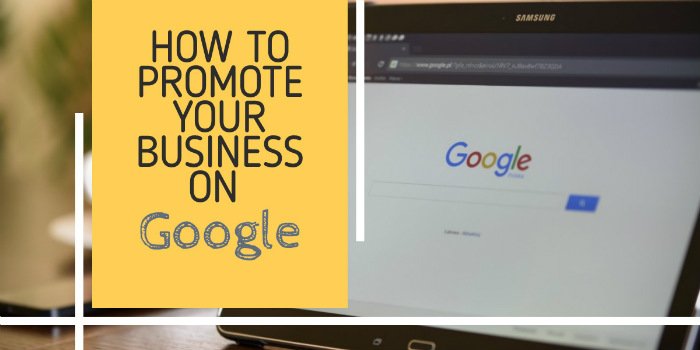Once upon a time, marketing was simple. You hung an advertisement sheet on your shop’s window showcasing your wares and waited for customers to request your services.
Increasingly, however, things got harder. First newspapers, then magazines, radio, and TV. Then, the Internet. Before the digital ink on your brand new website had a chance to dry, everyone was talking about social media and Web 2.0.
Nowadays, it feels like no business has a chance of success without advertising online. And Google seems like the natural place for it.
There’s just one problem: You’re still unclear as to what Google Ads are or whether there are any free options. Do you need to hire someone or can you handle things on your own? How do you know if your Ads are working? How high should your budget be?
For all of you whose head hurts when you hear of SEM, SERP, and all the rest of modern tongue twisters, here’s a brief guide that will help you understand what Google does and what its Ads entail.
It will introduce you to some key concepts while keeping it as jargon-free as possible. And, who knows, it may even take out the pain from online advertising!
Why do you need Google Ads?
Google Ads are an answer to a specific problem: people want their website to appear on the first page of the search engine’s results when someone searches for a keyword you’re interested in.
With research suggesting that up to 95% of people never bother to look beyond that first page, this matters. A lot.
Lost the buzz for your business?
Starting a business is exciting. Succeeding is rewarding. The bit between is hard, repetitive, and full of self-doubt.
The Lonely Middle Club (From Business4Beginners) helps you through it:
Get support and advice from other small business owners
Remove the self-doubt that’s holding your business back
Learn techniques and strategies to grow your business faster
Be inspired with our exclusive ‘swipe’ file and AI-powered tools
No pressure – work at YOUR pace, towards YOUR goals
—
Google uses a number of highly advanced algorithms to present you with the most relevant results. Hundreds of factors determine your website’s ranking, which, in turn, decides your position on the search engine’s results page (SERP).
From the number of pages your website has to its age, the number of links leading into the website and out of it, how long people stay on your website, and how original and fresh your content is, getting that coveted first spot organically—i.e. without paying—is pretty hard.
But not impossible.
Before you start spending money

Before spending money or time preparing Ads, it is a good idea to focus on having a solid website that responds to Google’s algorithm requirements. Yes, it’s hard to show up organically on Google.
But you can greatly increase your chances of this happening if you follow the tips below.
1. Your domain name is your business
Make sure your URL (your domain name) is representative of what you do and matches your business name. If you are an architect whose business name is “The creative architect” but your website is called www.buildingforyou.com, Google will get confused as to what you really are called.
This will make it harder to appear at the SERP’s top when someone is searching for an architect. A domain name like www.thecreativearchitect.com is a far better choice.
2. Constantly update your content
One of the most important things Google is looking for is fresh content. Make sure your content is updated frequently.
If your company sells legal and accounting advice but you are also moving into insurance, update your website accordingly with both text and photos. Include the right keywords in the images’ description, also known as “alt tags.”
Similarly, if you stop selling a particular brand of shoes, take them off your e-shop.
And if you are a tech business, bring your client and project list up to date, otherwise, your website will only be displaying projects dated back to 2016 or 2017. It will look as if you have not undertaken any project since then—not just to Google but to visitors as well.
3. Have several landing pages
A landing page is the specific page on your website where people will end up upon clicking on Google’s link to you. For most of us, our website’s landing page is none other than our home page.
This makes sense. A home page is where you introduce yourself and your business. It is a generic landing page. Sometimes, it’s perfect for a landing page.
However, you can also have several specialized landing pages, depending on the services or goods you sell. For instance, if you’re a mover, you could have a page on your website introducing your moving services.
Yet another specialized page presenting your packing services and another one for the insurance you provide to your customers regarding their moving needs.
Wouldn’t it make more sense if Google were to lead people looking for different things to just the right page?
You can achieve this by making your landing pages interesting, catchy, and with a clear call-to-action (CTA) message: ‘click here for more details’ or ‘find out about our range of organic pet food’. Distinct landing pages are particularly useful and effective if you decide to use Google Ads, but they can also be used organically.
4. Have interesting, high-quality content

Google prioritizes valuable, fresh information. While the former is harder to determine, it estimates the latter by looking at when your content was published. So, an easy way to increase your visibility organically is to regularly update your content.
Not all content’s the same, though. Your readers will enjoy it if it’s interesting, up-to-date, and informative. This will reflect on their behaviour: they will link to it, copy it, refer to it, share it, and spend longer on your website.
This sort of behaviour will encourage Google to display your website higher up on its SERP.
So, fill your website with useful content. Try to turn it into an information hub by including material not only about your own business but also about your line of work or your industry.
Follow trends, if possible, as these will include popular keywords. If, for example, you’re an architect or an engineer, write about organic insulation. If you are a garden designer, discuss global warming and its implications in choosing plants.
Selling food? Then perhaps you can include a few recipes and cooking tips. If you are a tech business, write about what AI is and how it can affect our life.
5. Eye-catching (and legal) photos
We live in a digital era and people are bombarded with visual information. Photos are essential on any website. Make sure your photos are good-quality and characteristic of your business.
Also, confirm that you have the proper licence for the photos you are using or verify that the photos you are displaying on your website are royalty-free.
An abundance of photos will help you in two ways. First, visitors who enjoy your content will spend longer reading it, thus increasing your Google ranking. Photos and images help with this.
Second, you can include a brief description of the photo in the relevant fields (description and ‘alt-tag’) when you insert it into your page. Make sure you use as many of your keywords as you can.
Just steer clear of to the dreaded keyword stuffing technique, where you simply repeat a bunch of keywords, as this can get you penalized by Google.
Google My Business

Another way to gain organic followers (no, not the kind who eat organic veggies) is to list your website on Google My Business.
This is a free online service where businesses can upload their information. This is usually displayed on the SERP’s right-hand side.
Once someone searches for your business, your business details and relevant information will be shown on the right.
This listing includes photos, the nature of your business, working hours, any running offers and promotions, and customer and client reviews.
Locality and Google Maps
Creating an account with Google My Business is simple enough; just click on the link and follow the instructions. However, keep in mind that this service works better for local, brick-and-mortar shops and services.
This is done on purpose: My Business focuses on promoting businesses at a local level and works really well for people looking for a specific business or profession in their area.
This local focus also means that many searches are done on mobile devices: for instance, customers looking for an open restaurant late at night or someone looking for child-minding services in their area for the next two hours.
Keep this in mind when uploading information about your business: photos and texts should be easily displayed and read on mobiles.
Because of the local nature of My Business, Google also includes a link to a Google map of the area, complete with instructions on how to reach your business.
This can be an invaluable tool in drumming up local business and getting people through your door, especially if your business is open to clients and customers.
What to include on your Google My Business
On your My Business page, include details about what you do, photos of your premises, your products or your services, as well as information regarding opening hours, offers and new products.
Think of putting eye-catching photos to capture people’s attention and add value to your business.
Also, include a call-to-action (CTA): this is a button or text which will prompt people to visit your website. Active verbs like ‘do,’ ‘visit,’ and ‘take advantage’ work well as CTAs, and Google My Business allows you to pick from a list of common ones.
However, avoid using too many CTAs, as this will confuse your potential clients. People like clarity: faced with too many options, they will just leave. Therefore, it’s better if you ask them to do just one thing, like download a coupon, visit your website, or join your newsletter.

Your My Business page will also feature reviews from past clients and customers. Reviews are automatically displayed and cannot be deleted, no matter how negative they might be.
It can be useful to respond politely to both positive and negative reviews.
Potential clients will read your response to reviews and will evaluate your business accordingly. Would you go to a hairdresser who is picking up a digital fight with a dissatisfied client?
Just like your website, you should update your info on you My Business page to keep it up-to-date. If you change your opening hours, update that info on My Business.
If you have a seasonal offer, upload it immediately. Google has introduced a mobile app which lets you upload updates to your page instantly and on the go. This makes updating fast and easy.
Google Ads
All the above suggestions can help increase your business’ presence organically. The alternative is to ignore organic listings and actually pay for the privilege of appearing at the top of Google’s SERP.
While there will still be competition for the top, this will be for the relatively small number of people willing to pay for that specific keyword you’re targeting. Your chances of coming up first just improved—dramatically.
The philosophy of Google Ads
When searching for a specific keyword on Google, you will notice the Ads at the top of a page—the ones with a little green box displaying, well, ‘Ad’. Ads will come at the top of any SERP, above and below the organic results.
Ads are created through Google Ads; the paid service Google has instituted to help businesses promote their services and products online. It lets businesses display their Ads on its SERP, no matter how competitive a keyword may be.
The importance of keywords
The philosophy behind Google Ads is based on keywords, Google’s cornerstone concept. For example, if you are looking for an electrician in your area, you will type ‘electrician’ and ‘Birmingham’ and Google will display results responding to your keywords.
At the top, you will get paid Ads from electricians in Birmingham who are advertising their services. Below that, organic results will be displayed—usually including more generic websites.
The logic of keyword bids

Google’s logic behind keywords is that you bid for the keywords you have chosen in a split-second online auction. Just like any other bid, the higher the bid, the more likely your Ad is to be displayed on top.
Remember, there are millions of businesses advertising their products and services on Google Ads every day. You are trying to compete with them in order for your Ad to be displayed first.
Running a successful campaign is all about balance: bid too low, and your Ad will never show. Bid too high, and you can’t make a profit.
It helps if you have as clear a focus as possible, as this will limit your competition. For example, you could focus on your local community and one specific, highly-sought service. Or, you could choose a wider area and one obscure service only you provide.
Only you know your business well enough to know which option suits you best but it will usually take a lot of trial-and-error to get it right. Achieving this balance is key to your campaign’s success—and one of the hardest things to pull off.
A quick tour of how to set up your Google Ads
Setting up your Google Ads account is easy. You are required to have a Gmail account, which will also be used as your username for your Google Ads account.
Once you have entered the Google Ads space, you can start building your Ads by selecting a number of options.
Geographic location
Google Ads let you choose the location your potential clients will be coming from. If you choose a local clientele, your Ad will show to locals who are actively searching for your services or products.
You will be asked to provide a radius around the area you are targeting; you can narrow or expand this according to how many people you are trying to reach and your available budget.
Your budget

You can choose the daily budget you are willing to spend on your Google Ads. This can vary from £1 or £2 daily to as much as you want. The lower your daily budget, the fewer chances you have of your Ads showing up and outrunning your competitors.
Also remember: you also have to select a maximum bid on your keywords.
If your bids are high but your budget low, you will spend your daily budget in just a few showings of your Ad. Even worse, if your bid is higher than your daily budget, your Ad will never show.
Google lets you change your budget at any point during the campaign. This gives you the flexibility to adjust to how people are responding to your Ad. You can also discontinue any Ad or keywords at any time, which again brings adaptability to your choices.
Your keywords
You set up Ads based on a few crucial keywords. When selecting keywords, however, don’t think like a business owner: think like a potential customer and client. What will they type into Google to look for businesses similar to yours?
Google offers a free special service called Keyword Planner. This is one of the most powerful tools to identify the best keywords for your business and offer ideas and suggestions about possible keywords you might not have thought of. It will also give you pointers about so-called long-tail keywords (keywords consisting of more than two words).
The Keyword Planner will also help by showing trends around your chosen keywords and how and what people are searching for in your industry. You even have the choice to exclude negative keywords.
Negative keywords are words that you don’t want your line of business to be associated with. For example, if you are a digital graphic designer but don’t offer any logo design services, you can include ‘logo’ in your negative keywords. Your Ad will not show if someone looks for ‘logo’ but it will for, say, ‘brochure design.’
Running Google Ads for a few weeks and fine-tuning them on a regular basis will let you hone your keywords and match your business with what potential clients are trying to find.
Your bids

When more than one business is targeting the same keyword, Google has to choose which Ad to display. One of the ways it picks the right one is by seeing how much each of them is willing to bid. This is determined by the so-called maximum bid, or simply bid.
Some keywords are more competitive than others, so you may need to increase your bid to outmatch your competitors. There are other factors, though, which impact on how high you may have to go.
For example, during summer, keywords such as ‘summer holidays’, ‘swimming pool holidays,’ or ‘beach resort’ will be more competitive and, therefore, more expensive. These same bids could be lower in January or February.
Bids also depend on the area you are targeting: larger and more densely populated areas will be more competitive. Advertising as a lawyer in a 10-mile area around Exeter will be cheaper than advertising in the Greater London Area because of the difference in population density.
Mobile and desktop
Google offers you the possibility to choose whether your Ad will be displayed on desktop or mobile devices or both.
Most people will want their Ads to appear on both media, but there are cases where one if more appropriate than the other. For example, if you’re an App developer who promotes your latest mobile App, it may make sense to focus your Ads on mobile users alone.
Your Ad
Now is the time to put on your creative cap. You have to choose your Ad copy. Your Ad should be concise and informative. You are required to advertise yourself using a handful of well-chosen words, therefore being sharp and to-the-point is essential.
Clarity about your offer or your product will help you write a straightforward Ad. For some, it may also be useful to state the targeted location as well.
Ad sets
Ad Sets let you organize your Ads in groups. Each Ad Set can contain a number of Ads. Promoters use them to organize their Ads, usually by theme or landing page. So, if you’re selling both car insurance and home insurance, you could create two Ad Sets, one for each kind of service.
Each Ad Set can contain a number of Ads, each leading to a different landing page. You may even create one Ad Set for Ads leading to review pages.
You can also target mobile devices with one Ad Set and desktop users with another, depending on what you are selling and how you want to target people.
For example, if you regularly promote offers which only last a few hours, you could organize the relevant Ads into a separate Ad Set. Targeting different audiences with different Ads is more astute and effective than trying to target all your potential clients with a single one.
Statistics

Once you start your Ads, you need to give them a few days before they start generating useful data. You can monitor them through a number of useful metrics Google includes in its statistics.
This helps you experiment to see which Ads work best for you and which brings in the most revenue, by giving you statistics regarding their performance.
Thanks to Google’s budget flexibility, once you have analysed which Ads work best, you can increase the budget for these and discard any underperforming ones.
Timing
For many kinds of business, timing is everything. It may be best to display your Ads during working hours, when a client can pick up the phone and give you a call. Google helpfully lets you determine which days and even hours your Ads will be showing.
How am I charged?
Once you have finalized your Ads and submitted them to Google, you will have to wait for approval. This can take anything from a couple of hours to a couple of days. After that, Google will start to charge you for your Ads.
You are only charged if a visitor actually clicks on your Ad.
Let’s say someone is looking for a travel business in Liverpool. Your Ad shows up on their search. You will be charged an amount lower than your maximum bid if that person visits the webpage you have linked your Ad to. This model of payment is called Pay Per Click (PPC).
Things to remember

The above information will give you a pretty good idea of ways to promote on Google. However, Search Engine Marketing (SEM), and the art of running online Ads is a whole new science. If you wish to master it, you may start by keeping in mind the following extra tips:
- Google does not always display the highest bid. Google’s algorithm also takes into account other parameters in the milliseconds it takes Google to display the results to a search.
- Your Ad should be relevant to your keyword: advertising your accounting services by choosing irrelevant keywords such as ‘artificial intelligence’ simply because you have the latest AI software in the office will penalise your Ad. As a result, Google will choose to either not display it at all or raise the bid to unrealistic levels.
- The importance of the landing page: Google values consistency. The landing page you are sending your Ad to should be pertinent to the keyword you have chosen. For instance, say you are both selling computers and developing database applications. When you run an Ad for the latter, the landing page should be a specialised page about database applications and not a generic page about your computer business.
Conclusion
There are so many ways to promote your business on Google, it’s easy to get lost. Perhaps the most important thing to remember is that not all ways are costly. Google is in the business of helping people find what they’re looking for and strives to provide them with the best possible search experience.
It has invested in tools like Google Maps and My Business to help promote local business. And it consistently rewards good website practices such as fresh, high-quality content.
If you wish to go down the paid route, be sure to have done your homework: about 2% of people seeing an Ad on Google will click on it. Depending on your business, about as many may buy your service or product.
So, make sure the math is on your side. How much do you have to make before your Ads are profitable? How much are you willing to spend to make that happen? How much do you expect to make from new clients finding you from Google Ads?
Your keyword bids and your daily budget are contingent on you making a profit out of your advertising expenditure.
So, check your statistics to see how many new customers and clients you got from your Google Ads. Appraise the revenue these new clients bring in and compare it to the cost of advertising. Then determine whether you want to expand, minimize, or alter your advertising budget.







